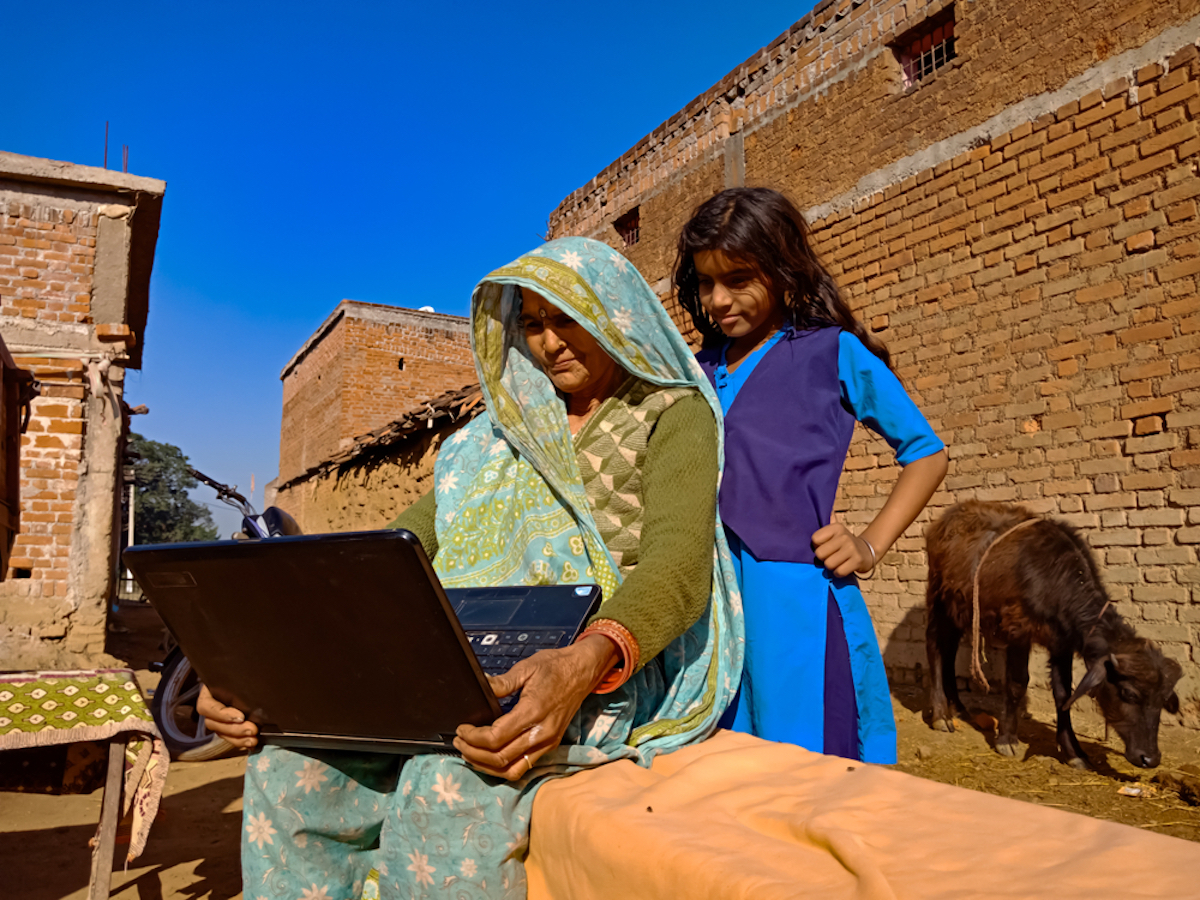Heads of state from around the world gathered at the UN Headquarters in New York last week to review the implementation of the seventeen Sustainable Development Goals (SDGs). They carried out a comprehensive review of the state of the goals, and discussed how to accelerate action on them leading up to the target year of 2030.
It’s no secret that we’re a ways away from full progress on the goals. As UN Secretary General António Guterres noted in July, as we approach 2030 “progress on more than 50% of targets of the SDGs is weak and insufficient; on 30%, it has stalled or gone into reverse.”
We’d like to propose that one reason for this lack of progress is a misleading indicator buried deep down in Section C of the ninth sustainable development goal: the way we measure access to the Internet.
The challenge with ‘access’
The Internet is a prerequisite for every single other SDG, because digital infrastructure is necessary for so many other areas of development. We won’t reach “no poverty” without universal access to digital financial services; we won’t see widespread “good health” unless patients can access telehealth at high speeds; we won’t see “strong institutions” unless citizens in every country can participate effectively in democracy online.
But to reach these ambitious connectivity goals, we need to measure Internet access honestly and effectively. And this is where SDG 9C gets it wrong.
The ninth sustainable development goal is focused on building resilient infrastructure through inclusive and sustainable industrialization. The topic of connectivity comes up in Section 9C, which is a call to “significantly increase access to information and communications technology” in the least developed countries. The ultimate goal: to reach “universal and affordable access to the Internet.”
The issue lies in the way “universal and affordable access” is measured. The first indicator for success under Section 9C reads as follows: “Proportion of population covered by a mobile network, by technology.” That refers to “the percentage of inhabitants living within range of a mobile-cellular signal, whether or not they are Internet users.
Here’s the problem: under that definition, a community is considered “covered” when they are in a geography covered by any mobile phone operator – even the most basic and unaffordable mobile phone services. And it doesn’t take into account whether people are actually using the Internet that is supposedly available to them.
Limits of the leapfrog
This indicator of success might have made sense back in 2015 when the SDGs was created. Back then, the mobile revolution was in full swing, and we were seeing truly incredible progress on the number of people covered by mobile service. It was a time when experts were talking about less developed countries “leapfrogging” past more developed countries thanks to mobile phone technology.
But in the past few years, we’ve seen the limits of the leapfrog. Mobile phones have done wonders for digital payments and basic communications – someone living in a remote village is now much more capable of having a bank account on their phone, or getting life-saving health information via text. But there is only so much that a text message can do. Only a small percentage of people in developing countries have access to high-speed Internet, and typically they must ration their usage to less than one gigabyte per day because of the high cost.
In other words, mobile operators are drip-feeding the Internet, when we need an open flow of information and access.
The real opportunity for change comes when people have uncapped, always-on broadband Internet access. When the service is affordable, users treat the Internet as a utility, rather than a luxury. It’s the difference between taking sips of water out of a bottle, versus turning on a faucet without giving it a second thought.
Meaningful connectivity
It’s too late for a revision of the Sustainable Development Goals and indicator 9C; we’ll have to wait for 2030 for that. But in the meantime, we hope that those leaders who gathered in New York City last week acknowledge the limits of the metrics developed in 2015. We’d also like to offer an alternative way to think about connectivity.
In 2020, the Alliance for Affordable Internet proposed a new target — meaningful connectivity — as a way for differentiating levels of internet access. Informed by stakeholders around the world, the target sets minimum thresholds across the four dimensions of internet access:
- Regular internet use (minimum threshold: daily use)
- An appropriate device (minimum threshold: access to a smartphone)
- Enough data (minimum threshold: an unlimited broadband connection at home or a place of work or study)
- A fast connection (minimum threshold: speed equivalent to 4G)
We see meaningful connectivity as a more ambitious policy goal: a higher bar that enables more people to get connected to a better Internet.
We also see it as a call to build the physical infrastructure so that broadband can reach every corner of the world; and so people everywhere are able to use the Internet as a utility. The good news is that uncapped, high-speed broadband Internet is more affordable than ever: between the falling price of equipment for fiber and high-capacity wireless technology, and a drop in the cost of deployment, the total capital expenditure for network buildout is decreasing rapidly. It’s a classic example of the learning curve phenomenon.
Looking forward one or two decades from now we can see most households in Sub-Saharan Africa, Southern Asia, and Latin America connected to the Internet with fixed infrastructure. What’s needed is meaningful investment in broadband. It’s all a cause for the creation of connectivity as a new and central category in impact investing. And that can start with revisiting the way we measure success in the sustainable development goals.
Ben Matranga and Jim Forster lead Connectivity Capital, the world’s first impact investment fund focused on expanding internet access in frontier markets.











